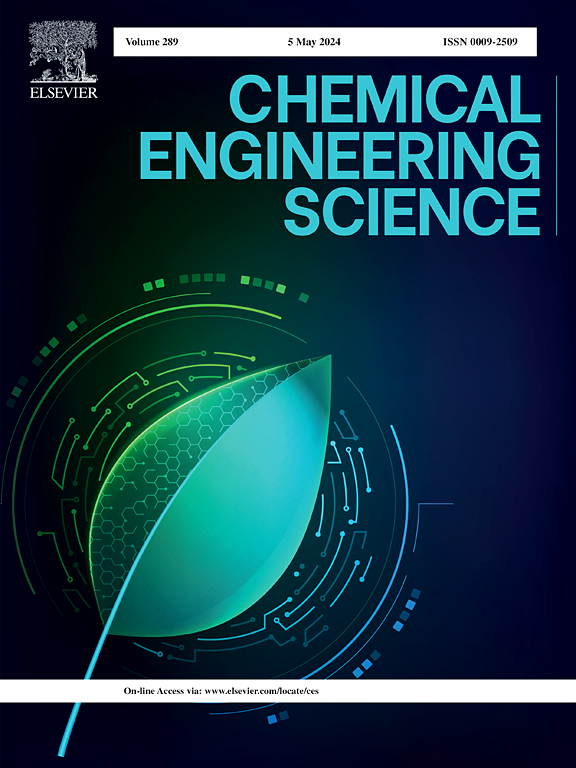co驱动连续发酵过程中梭菌的动力学建模和代谢变化
IF 4.3
2区 工程技术
Q2 ENGINEERING, CHEMICAL
引用次数: 0
摘要
在连续搅拌槽反应器(CSTR)中,研究了pH和液体稀释率(DL)对CO发酵过程中梭菌生长和代谢物产量的影响。实验在不同CO条件下,pH值为5.0 ~ 6.0,DL值为0.034 ~ 0.25 h−1。还进行了其他试验,以评估添加乙酸和乙醇对发酵性能的影响。稳态数据使用基于ierusalimsky的模型进行分析,该模型包含代谢物抑制效应。该模型较准确地捕获了C. carboxidivorans的特定生长动力学,平均偏差在20% %以下。结果表明,pH和DL显著影响发酵性能,pH影响产酸和溶剂型的平衡。本研究强调了优化pH和DL控制在改善工业规模发酵过程中的潜力,为优化工业规模发酵过程提供了预测工具。本文章由计算机程序翻译,如有差异,请以英文原文为准。


Kinetic modelling and metabolic shifts in Clostridium carboxidivorans during CO-driven continuous fermentation
This study investigated the effects of pH and liquid dilution rate (DL) on the growth and metabolite production of Clostridium carboxidivorans during CO fermentation in a continuous stirred-tank reactor (CSTR). Experiments were conducted at pH values between 5.0 and 6.0 and DL ranging from 0.034 to 0.25 h−1 under differential CO conditions. Additional tests were conducted to evaluate the impact of acetic acid and ethanol supplementation on the fermentation performance. Steady-state data were analyzed using a Ierusalimsky-based model, which incorporates metabolite inhibition effects. The model accurately captured the specific growth kinetics of C. carboxidivorans, with an average deviation below 20 %. The results showed that pH and DL significantly influenced the fermentation performance, with pH affecting the balance between acidogenesis and solventogenesis. This study highlights the potential of optimized pH and DL control to improve industrial-scale fermentation processes, offering a predictive tool for optimizing industrial-scale fermentation processes.
求助全文
通过发布文献求助,成功后即可免费获取论文全文。
去求助
来源期刊

Chemical Engineering Science
工程技术-工程:化工
CiteScore
7.50
自引率
8.50%
发文量
1025
审稿时长
50 days
期刊介绍:
Chemical engineering enables the transformation of natural resources and energy into useful products for society. It draws on and applies natural sciences, mathematics and economics, and has developed fundamental engineering science that underpins the discipline.
Chemical Engineering Science (CES) has been publishing papers on the fundamentals of chemical engineering since 1951. CES is the platform where the most significant advances in the discipline have ever since been published. Chemical Engineering Science has accompanied and sustained chemical engineering through its development into the vibrant and broad scientific discipline it is today.
 求助内容:
求助内容: 应助结果提醒方式:
应助结果提醒方式:


